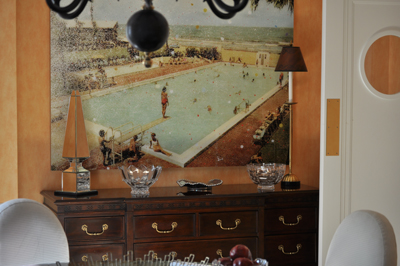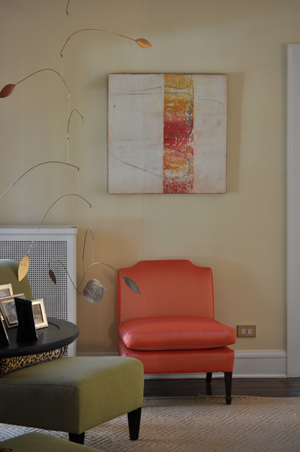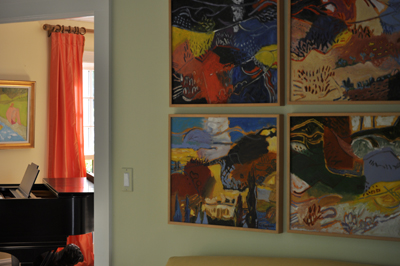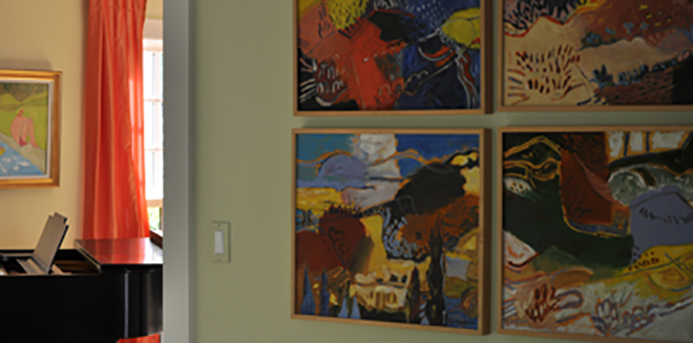With the art fair season getting into full swing, it’s time to dispel some misconceptions about art and interior design.
Myth #1: If I own a traditional home, I have to buy traditional art.
Just the opposite, declares Anne Loucks, owner of Anne Loucks Gallery in Glencoe “I love the juxtaposition created when interesting, engaging contemporary art is paired with traditional elements. The result is a contrast that often makes the art stand out while the traditional elements become even more beautiful and pronounced.”

Don’t be afraid to mix different mediums, styles of art or time periods. In her own home, Loucks hung a 1920s impressionist seascape next to a bold abstract contemporary print; in another room, a large scale contemporary photograph hangs next to a Tracy Adams encaustic painting.
Myth #2: Art should match your furniture and fabrics.
Art absolutely does not need to coordinate with your furniture, asserts Loucks. In fact, it will make more of a statement if it doesn’t match. “Art can enrich your life and is much more interesting to live with if it doesn’t look like it came with the couch.”

Keep in mind that context is important and you don’t want your design elements fighting against your art. For example, a busily patterned wallpaper might not be an ideal backdrop for a grouping of detailed prints. If you want your art to be the focus, Loucks generally recommends a more neutral, textural interior.
Myth #3: Good interior design only includes “fine art.”
Loucks always recommends buying what you love and enjoying the process. “Good art is whatever you find interesting, engaging or captivating. It draws you in, provokes thought and helps make connections.”
She does caution against choosing art that feels too commercial or mechanically reproduced. (For more advice, check out this article: A Guide to Collecting Art

“Fill your mind with images in galleries, museums and art shows, and soon you’ll see a pattern develop of what art you like—not what matches the sofa,” adds Loucks.
Myth #4: Art should be reserved for the more formal spaces in your home.
Art can be displayed throughout your home: up and down staircases, in powder rooms, master baths, kitchens, anywhere it makes you happy. But wherever you display it, advises Loucks, hang it well.

However, save the family vacation and baby photos for your private spaces.
Misconception #5: Art should always be hung on the wall and isolated to have the most impact.
How you display art is as personal as how you choose it, explains Loucks.

She has a favorite abstract Helen Frankenthaler print leaning on her mantle, a photograph hanging above her stove, and little oil paintings perched in her living room bookshelves.
But there are mistakes to avoid:
- Hanging art too high (artwork typically should be hung at eye level, with the midpoint at 58 to 62 inches).
- Scattering small-scale artwork around a room. Groupings always have more impact.
- Disconnected art. Balance your larger scale pieces with groupings of smaller artworks.
- Unbalanced groupings. Before you hang multiple pieces together, lay your pairings out on the floor to ensure that the overall layout makes sense.
Anne Loucks Gallery
309 Park Ave.
Glenview
847-835-8500
http://www.loucksgallery.com/

